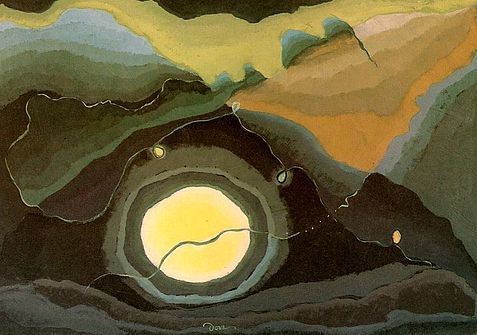(American artist 1880–1946)
Responding to Dove’s 1997 retrospective at the Whitney Museum of American Art the critic Robert Hughes stated:
“If there was ever an artist in the American grain, it was Arthur Dove, with his obstinate home-made lyricism, his complete authenticity and his desire to be modern on local–not Euro-imitative–terms.”
Soon after Dove’s return from an 18 month trip to Europe he met Alfred Stieglitz in New York, who was to be his dealer and adviser for the rest of his life. Stieglitz invited him to submit work to the Younger American Painters exhibition held at his gallery at 291 Fifth Avenue in 1910. Dove’s first one-person show was in 1912; by then, his place in the artistic avant-garde of the Stieglitz circle (Dove, Marin, Hartley and O’Keeffe) was assured and Dove established himself as one of America’s most prolific and inventive artists working with abstraction.
Like other artists in Stieglitz’s circle, Dove sought to represent the unseen rhythms and nuances of his environment and to record personal interpretations of nature by reducing form to its purest essence. He was fascinated with natural cycles of growth and renewal and sought to make those universal harmonies visible in his work. He was also frequently inspired by the parallel between the visual arts and music. Dove shared these interests with Georgia O’Keeffe who was perhaps his closest ally among the other artists of the Stieglitz circle.
Arthur Dove’s reputation continued to grow after his death, and he has been credited with exercising an indirect influence on the first generation of Abstract Expressionism, such as Jackson Pollock and Mark Rothko, who placed similar emphasis on the artist’s subjective experience of his surroundings and on the intrinsic emotional power of color and line.
